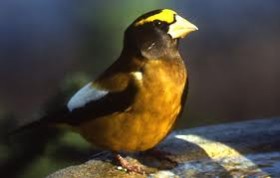Birding is the fastest growing out-door recreational activity in North America. It is one of the only outdoor activities that makes no demands on the environment. The easiest way to start is to put out some winter bird feeders, fill them with Black Oil Sunflower seeds, Niger Steeds, mixed seed and some suet. Then you need a good bird book. My favourite is “Birds of North American” by Kaufman; but there are dozens. For winter feeders you don’t really need binoculars or a camera but both increase the fun. To make it easier to identify what you see, Harriet MacMillan and I have made 3 lists of common Lochaber feeder birds that I will post on the “Nature Corner” over the next 3 weeks. The first will be the most common birds in order, the second will be the next most common and the third will be the special rare birds.
We have 2 species of Chickadee. The Black Capped Chickadee (above) and the Boreal. The later rarely visits feeders.
Everyone loves the Blue Jay. They are especially fond of peanuts.
I can remember the first Mourning Dove I ever saw. It was in Annapolis Valley in the early 1960s and they were rare. Now they are very abundant. Surprisingly they are also the most popular game bird in North America.
You will often see the Junco eating seeds on the ground; under the feeder, salvaging those that other birds dropped.
The Evening Grosbeak arrive in flocks and stay all winter.
The European Starling is an introduced species that out competes native birds for food and nesting sites. But they are attractive up close.
The Grackle appears in late winter and is a harbinger of spring. The courtship display that you can watch on your feeder is great entertainment.
The American Goldfinch is one of the first to arrive and the last to leave; but the transition from fall drab plumage to spring spectacular is truly inspiring.
Purple Finch male and female.
The Song sparrow is mute in the winter but our best singer in the spring. The only two sparrow species you will likely get that have a black breast spot is this one and the American Tree Sparrow. Check your bird book. Only the latter has white wing bars.
The Downy Woodpecker ( above)and the Hairy Woodpecker are both suet feeders. The are almost identical except for size; the Hairy being larger.
The Hairy Woodpecker, however, has a longer bill in proportion.
Next week will be the next most common feeder birds.
Junco











